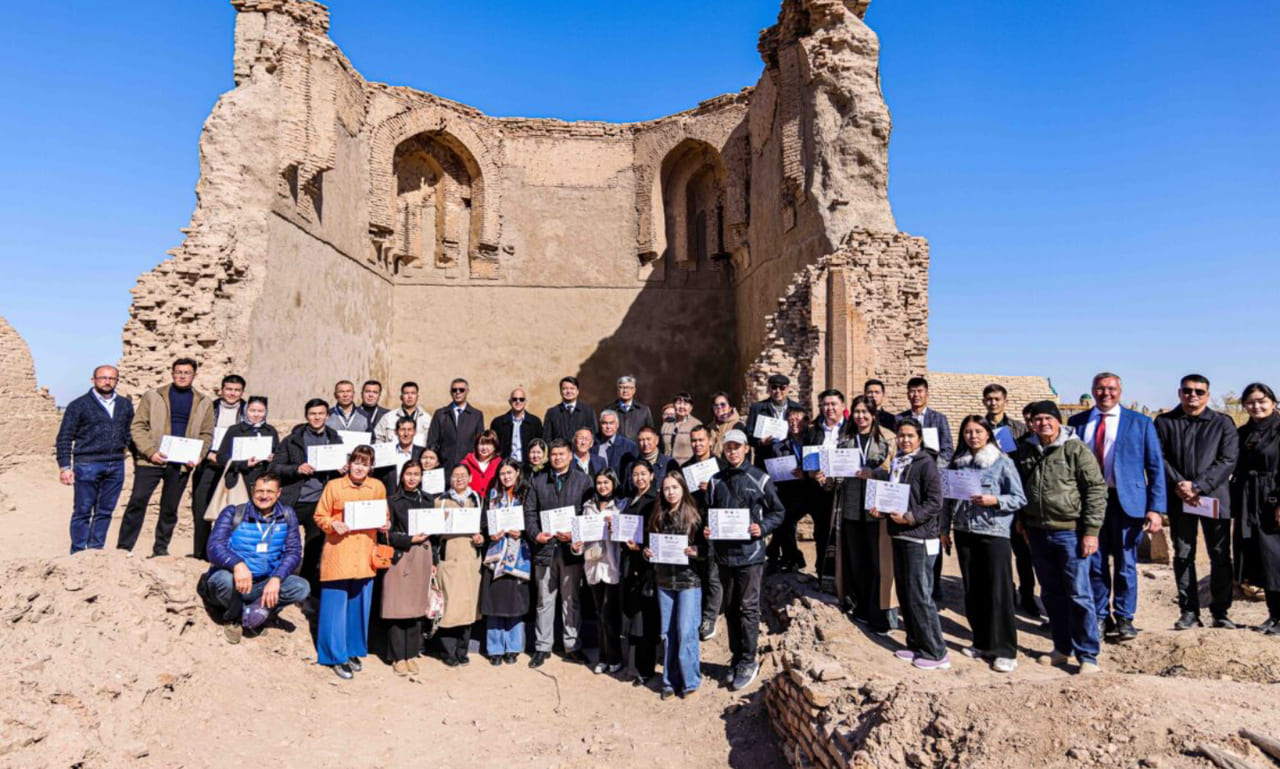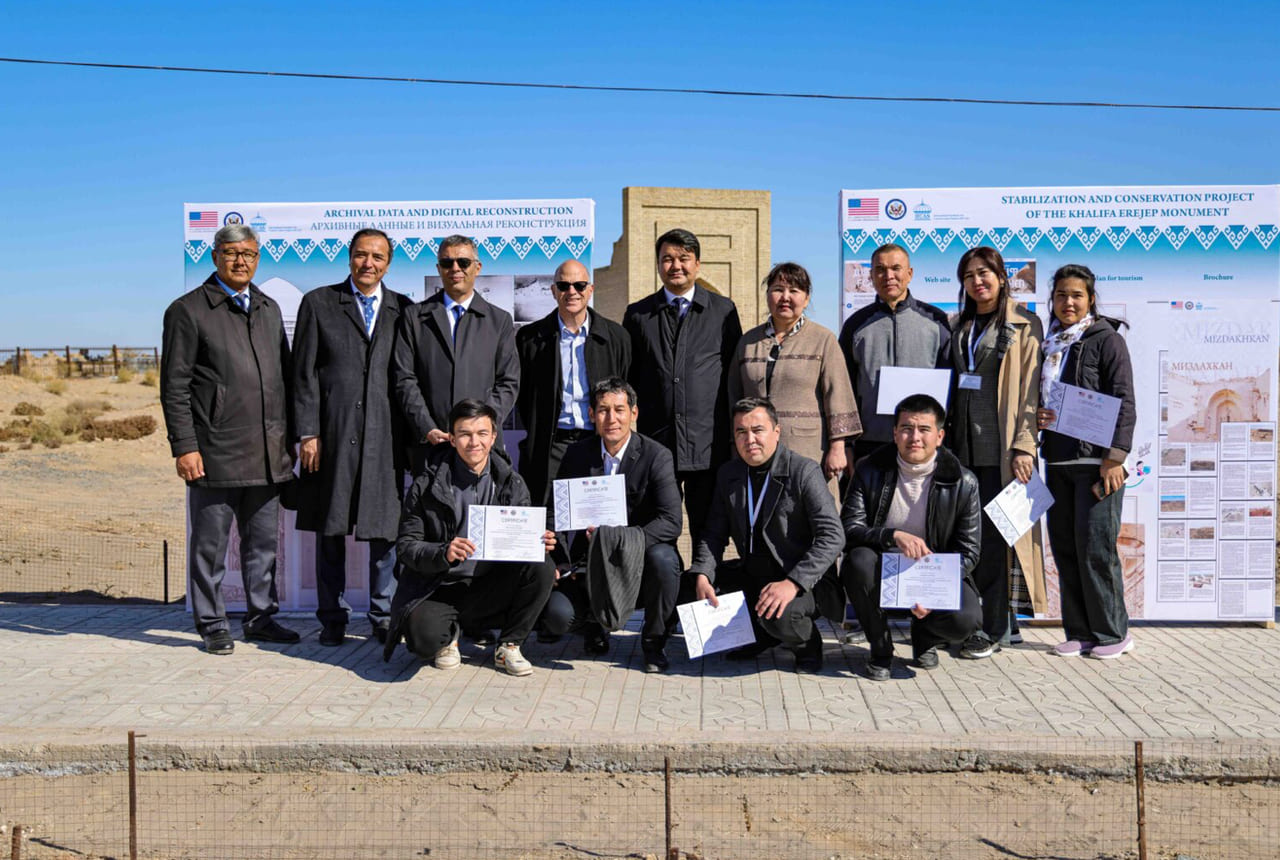U.S. Ambassador Jonathan Henick visited Khojayli to celebrate the reopening of the newly reinforced Khalif Erejep Mausoleum on October 15. This restoration was made possible through a grant from the U.S. Ambassadors Fund for Cultural Preservation (AFCP), awarded to the International Institute for Central Asian Studies (IICAS).

The U.S. Embassy allocated approximately $80,000 for the conservation of this historically important structure, originally built in the 12th century. The restoration project employed advanced techniques, including geophysics, geodesy, archaeological investigations, structural monitoring, 3D scanning, photogrammetry, and radiocarbon dating, to thoroughly assess the site's condition.
In addition to structural enhancements, the mausoleum now features information boards with interactive elements that offer visitors detailed insights into its history and the conservation methods applied. An audio guide was developed to provide an immersive experience, with informative commentary accessible via mobile devices. To further engage the public, a dedicated website, has been launched to share historical background, updates on conservation efforts, and practical visitor information.
"Karakalpakstan’s rich history and culture shine through this important monument. It reflects Karakalpakstan’s deep traditions and ancient soul," Ambassador Henick stated during his visit. He emphasized that the preservation of the Khalif Erejep Mausoleum symbolizes the strong partnership between the United States and Uzbekistan. "Through the Ambassadors Fund for Cultural Preservation, we are honored to support Uzbekistan’s efforts in preserving its rich history for future generations. This effort also reinforces our bilateral commitment to cultural heritage preservation."

The project also included seminars for local scientists and conservators focused on architectural conservation and sustainable tourism development. Trainers introduced participants to cutting-edge methods for geodetic measurement and photogrammetry, enhancing their skills in accurately documenting and preserving cultural heritage. Participants explored sustainable tourism strategies that promote cultural sites while maintaining their integrity and authenticity for future generations.
The Ambassadors Fund for Cultural Preservation, established by Congress in 2001 and administered by the U.S. Department of State, provides direct grant support for the preservation of cultural sites, objects, and expressions in developing countries. Since its inception, the Fund has supported 15 projects in Uzbekistan, totaling $1.3mn, aimed at restoring ancient buildings, assessing rare manuscripts and museum collections, protecting archaeological sites, and documenting traditional craft techniques.
The Khalif Erejep Mausoleum, located in the Mizdakhan necropolis of Karakalpakstan, Uzbekistan, dates back to the 12th century. Often referred to as the "World Clock," the mausoleum derives its name from an ancient legend suggesting that it measures human existence, with a brick falling from its walls each year to signify that when the last brick falls, it will signal the end of the world. The mausoleum is part of a larger necropolis that holds great importance in Islamic heritage
Follow Daryo's official Instagram and Twitter pages to keep current on world news.
Comments (0)